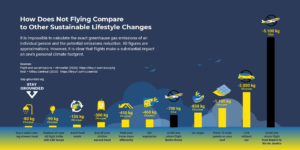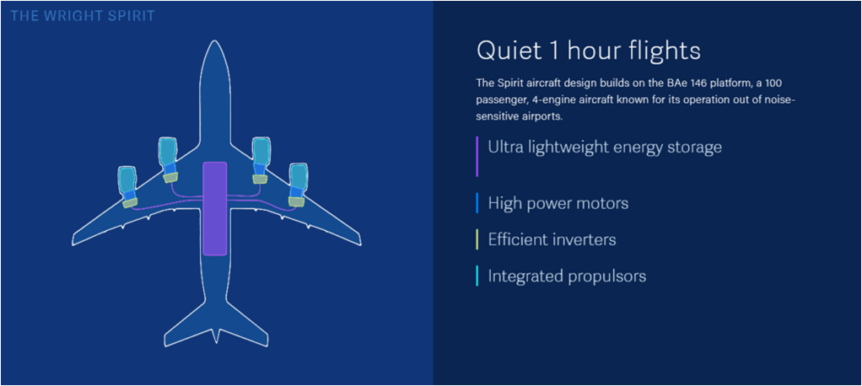A one kilowatt per kilogram battery would be a literally fulfilled wish in any aircraft designer’s list of desirable advances. Tesla’s drive around with 260 Watts per kilogram in their floors, and Amprius recently announced 500 Watt per kilogram cells. A battery able to store one kilowatt of energy in one kilogram (2.2 pounds) would be an enormous breakthrough for electric aviation. Under “stealth” development before being announced in 2023, the battery could become a fitting companion to the lightweight motors and controllers Wright is crafting.

Weight and volume comparisons for idealized aluminum, liquid H2 and lithium-ion energy storage. Wright Electric
ARPA-E (the Advanced Research Projects Agency–Energy) rewards some very creative teams. One winning team combines Wright Electric and Columbia University in an effort to develop tomorrow’s 4X batteries.
Three Project Parts
ARPA-E awarded $1,499,098 to “support development of an ultra-energy-dense aluminum battery and novel artificial intelligence system.” Part of the Plane Electrification with 1K energy storage systems program (PROPEL-1K), the award will fund what Wright promotes as “Air-1, [an] elevated temperature battery designed for electric airplanes and unmanned aircraft systems.” Designed for aircraft safety standards, the batteries will provide “High discharge rates for fixed-wing aircraft takeoff profiles.”
Another part of the award will fund Marine-1, a similarly ambitious, “Aluminum air battery designed for electric container ships and ferries.” The converse of the aviation batteries, “Low discharge rates will enable longer duration voyages.” Note the batteries can be “tuned” for different missions.
A third aspect of the project involves Artificial Intelligence. AERES – Automated Experimentation with Radical Electrochemical Systems enables laboratory robots to rapidly evaluate electrolyte formulations. AERES systematically screen these formulations to “uncover relevant patterns,” and “applies techniques from high throughput drug development” to find appropriate paths forward.
The three irons in the fire enable work with the aluminum-air part of the battery. Other firms such as Phinergy in Israel (now collaborating with India) have explored this technology, demonstrating up to 600 miles driving range in small cars and promising up to 1,800 kilometers (1,118 miles). IBM was working to achieve what is just now being announced by Wright as far back as 2012.
Innovative Approaches
To overcome obstacles that have blocked development of other aluminum-air batteries, Wright devised swappable aluminum anodes that allow for mechanical recharging. Earlier efforts seem to have led to oxidation blocking charging and discharging.
A 3D design instead of a 2D planar chemistry should improve contact between anode and cathode. Circulating the electrolyte prevents “the accumulation of reaction products within the cell structure to remedy limitations of static aluminum-air batteries.” Adding to the flow, heating the battery to the point where the electrolyte is molten enables the addition of active materials.
An old idea finding high-tech solutions, Wright’s battery could be the first of many new and innovative approaches to high-capacity cells.
The aluminum-air flow battery under development has swappable aluminum anodes that allow for mechanical recharging. Aluminum air chemistry can achieve high energy density but historically has encountered issues with rechargeability and clogging from reaction products.
To overcome these barriers, Wright Electric is using a 3D design instead of a 2D planar chemistry to improve the contact between anode and cathode. The system also circulates the electrolyte, preventing the accumulation of reaction products within the cell structure to remedy limitations of static aluminum-air batteries.
Wright launched its battery program in 2023 after years of stealth development. The batteries are being designed to be 4x more energy dense than the Li-ion batteries that power EVs.
A Social Conscience
Wright advocates for cleaner aviation as part of its interest in social justice. The company promotes an organization called StayGrounded.org. which specializes in sharing uncomfortable truths about air travel. Wright hopes to overcome these objections through its commitment to clean regional flight and responsible technology.

Since regional flights under 800 miles comprise 50 percent of emissions, Wright’s approach could have a tremendous impact on the climate

